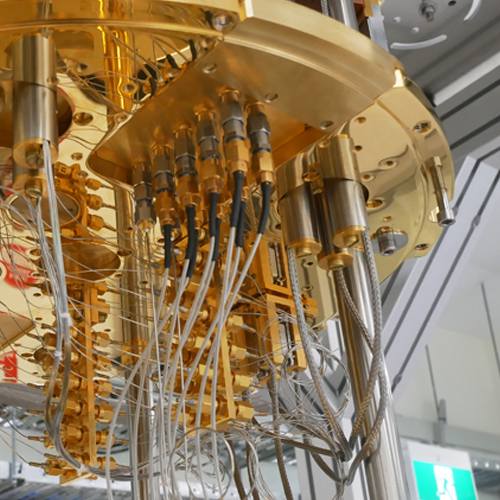Research theme 1
Topological materials

Prof Alex Hamilton
Leader, Research theme 1,
UNSW
The ambitious goal of Research theme 1—realising dissipationless transport of electrical current at room temperature and developing novel devices capable of controlling this current—connects scientists from Australia and abroad
Expertise: Semiconductor nanoelectronics and nanofabrication, 2D materials, electronic conduction in nanoscale devices, spin-orbit interactions, behaviour of holes in semiconductor nanostructures
Research outputs (Alex Hamilton):
270+ papers
4200+ citations
h-index 32 (Scopus)
Read our Case Study
FLEET’s topological-materials research theme seeks to achieve electrical current flow with near-zero resistance, based on a paradigm shift in the understanding of condensed-matter physics and materials science: the advent of topological insulators.
Unlike conventional insulators, which do not conduct electricity at all, topological insulators conduct electricity, but only along their edges.
Along those topological edge paths, electrons can only move in one direction, without the ‘backscattering’ that dissipates energy in conventional electronics.
FLEET’s challenge is to create topological materials that will operate as insulators in their interior and have switchable conduction paths along their edges.
Topological transistors will ‘switch’, just as a traditional (silicon-based) CMOS transistor does, with a ‘controlling’ voltage switching the edge paths between being a topological insulator (‘on’) and a conventional insulator (‘off’).
For the new technology to become a viable alternative to traditional transistors, the desired properties must be achievable at room temperature (otherwise, more energy is lost in maintaining ultra-low temperatures than is saved by the low-energy switching).
Approaches used are:
- Magnetic topological insulators and quantum anomalous Hall effect (QAHE)
- Topological Dirac semimetals
- Artificial topological systems.

- Develop new models to understand potential electric-field switching of a quantum phase transition, allowing low-voltage switching
- Develop DFT-validated, effective tight-binding models for topological materials, and electron-transport models for a prototype topological material
- Study and control magnetic proximity effects at the interfaces of vdW heterostructures using electrochemical gating
- Create an artificial band-structure in a conventional material by nanoscale patterning
- Fabricate and study self-assembled lattices of metal atoms and organic molecules in a kagome geometry on insulating substrates
- Understand the nature of the bandgap in 2D topological insulator WTe2, which is likely an interacting topological insulator.
- Demonstrated topological edge-state conduction in Na3Bi over millimetre distances
- Established new fabrication technique for ultra-low-disorder artificial graphene in conventional semiconductor crystals
- Established crossover from 2D ferromagnetic insulator to a QAHE insulator in multilayer MnBi2Te4, which has a large (> 100 meV) bandgap
- Demonstrated exchange bias in the 2D vdW ferromagnet Fe3GeTe2, and showed that interlayer coupling can be tuned with an electrical gate
- Published multiple review papers, including
- review of multiferroics for future, low-energy data storage
- review of electrical transport in 2D topological materials
- review of QAHE in magnetic-doped topological insulators and ferromagnetic spin‐gapless semiconductors
- Demonstrated new, non-linear spin filter for application to spin-based electronics devices
Did you know...
Topological materials represent a paradigm shift in material science that were first proposed in 1987 and only demonstrated in the lab in the last decade. The importance of topological materials was recognised by the 2016 Nobel Prize in Physics, awarded to David Thouless, Michael Kosterlitz and Duncan Haldane.
